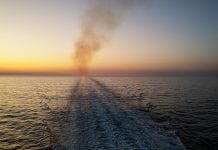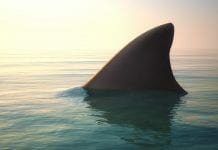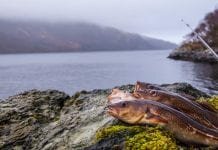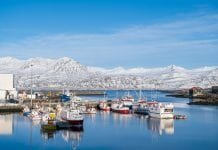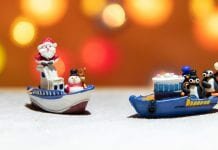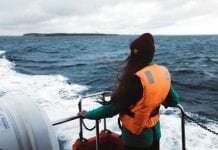
Nova Q sees predictability in water treatment as being of core importance to the future success of RAS aquaculture.
In the opening comments to RAS-Tec, the global Recirculating Aquaculture Systems (RAS) conference held in Washington earlier this year, AquaBounty’s Sylvia Wulf set the scene: over the next 30 years, the global demand for fish protein will double. Now, in 2019, 90% of our seas are overfished; meaning 100% of this new demand will have to be provided by farmed fish.
The recent Aquaculture Frontiers market report on RAS aquaculture from Spheric Research and UCN identified 10 areas where RAS needed to develop to fulfil its potential. Four of those challenges related to biological filters, and specifically the effective management of ammonia and nitrate in the recirculating water.
The value of RAS aquaculture
RAS is a system whereby fish and shellfish can be taken from hatchery through several growth stages in fish tanks where the water is recirculated as often as four times per hour. The water from the fish tanks is circulated through a series of treatments (including solids filters, biofilters, degassing and disinfection). Efficient systems can reuse well over 95% of make-up water, maintaining high quality water and healthy fish throughout.
Why is this of value? Aquaculture has had a couple of bad years. For example, there have been several high profile fish kills caused by algal blooms and rising sea temperatures; as well as cases of sea pen integrity failures where farmed fish have escaped into the wild – not to mention the issues of sea lice and environmental pollution of the inlets where farms are located. There are also issues of the environmental footprint of transporting fish across huge distances, from remote sea pens to anywhere from Northern Norway and Russia, to Chile and Canada; to the markets across the world.
The latest developments in RAS aquaculture, however, allow for huge onshore facilities in locations close to the market where salmon and other fish species can be grown from start to finish in specially designed tanks, cutting down on the environmental footprint and saving millions in transport costs. The salmon facility in Friedrickstadt was groundbreaking, but now both the huge Atlantic Sapphire facility outside Miami and the Nordic Aquafarms unit in Belfast, Maine are bringing the concept to a whole new level; with Miami claiming an ultimate production target of 200,000 tonnes from the facility.
Billions of dollars are being pumped into an industry which is seen to be the best potential solution to the sustainable production of the fish protein, which in turn could solve the forecasted world hunger issues going forward to 2050.
RAS-Right and the challenges that remain
As highlighted in the Aquaculture Frontiers series, there are several challenges or optimisations that remain to improve reliability and speed up their widespread adoption. The new RAS-Right ra.ge of bacteria products marketed in Europe by Irish biotech company Nova Q will have a direct impact on solving some of these challenges.
The ammonia/nitrification challenge
The biological removal of ammonia in water treatment for RAS aquaculture is complex and involves two distinct processes: nitrification and denitrification. It involves several bacteria species, functioning in specific conditions both with and without oxygen for the two different steps of the process.
To complicate matters further, the bacteria are grown on a multiple of media or surface types, some designs being of fixed media and others of moving bed bioreactors. Each system has its pros and cons depending on whether freshwater or saltwater, cold or warm, feed rate, sensitivity to disease, age of the fish and so on. Currently, starting these biological systems takes several weeks and a lot of labour, with no direct control of results.
With the ACF-RAS-Right range, there are both freshwater and saltwater options to rapidly seed systems with both ready-to-use and continuous feed options, ensuring rapid startup of all types of bio media systems. With a 30 month shelf life and no refrigeration requirement, these products are suited to the industrial scale supply needed by this growing industry. While this time lag may only be a few days, it is now possible to accelerate this step using simple ACF-RAS-Boost bioreactors (not only to readily oxidise ammonia but also nitrite), and to pre-empt this step in systems away from the fish.
The nitrate challenge
After nitrification, denitrification is needed to convert the less toxic nitrate to nitrogen gas. The challenge lies in this step needing a low oxygen (anoxic) zone in an environment where oxygen levels are elevated to support the fish health. This is complicated further by the risk of generating toxic sulphides if the oxygen levels drop too low, particularly in saltwater. The RAS-Right products have evolved from other biological products regularly used in wastewater, agriculture and remediation to prevent sulphides forming. The same is possible in bio media systems, eliminating one of the bigger risks to fish health.
The saltwater challenge
The ultimate goal of RAS aquaculture operators is to move the whole salmon production process from sea pens to land-based systems. Some huge systems are currently under construction in Norway and the USA, both of which are based on saltwater RAS. The savings in transport by having the production so close to the market more than cover the extra costs of land-based systems; and operators such as Nordic Aquafarms and Atlantic Sapphire are investing heavily in this technology.
However, the bio media systems in saltwater are more complex and the buildup of the wrong species of bacteria results in a buildup of sulphides, due to much higher levels of sulphur than in freshwater. Here, overdosing the correct nitrifying bacteria helps prevent the prevalence of sulphur-reducing bacteria and ultimately the production of hydrogen sulphide.
The disinfection challenge
Whether your RAS aquaculture system is a research site or a full scale land-based salmon facility, disinfection is required from time to time. Research sites will need to fully disinfect between each batch of fish, whilst the larger sites will possibly only disinfect a biofilter once per year. Either way, disinfection takes time and restarting the biofilter takes longer. The RAS-Right products allow predictability in restarting the biofilters, allowing the sites to add fish just a day or two after the disinfection is complete. For a research site, this could result in an extra batch of research per year per RAS-line.
Nitrification technical expertise
In launching ACF-RAS Right, Nova Q has discovered that quite a gap exists in the technical expertise in RAS Aquaculture. Julian Beatty, Managing Director of Nova Q, says: “The challenge is interesting: ammonia removal is such a key part of RAS aquaculture, yet the understanding within the industry is in line with more broad stream wastewater treatment such as in municipal systems. Just build it and the biology will get there eventually. It can be so much better than this.”
Nova Q has worked with New Jersey based BluePlanet Labs for nearly 10 years, using these and similar bacteria products for all kinds of wastewater challenges, but ammonia removal in particular. Beatty explains: “We supply products for ammonia removal across the board, municipal, dairy processing, abattoirs, pharmaceuticals and sludges; but every situation is different, which is why technical support is key.”
It is not just about adding bottles of product into the bio media; there are so many things that can go wrong, including poor choice of media. Nova Q is currently testing the performance of several different bio media types in both freshwater and saltwater at their Dublin facility. “There is such a wide range of bio media available, but it is amazing they are not evaluated for how compatible they are with nitrifying bacteria,” notes Beatty. “The industry is obsessed with protected surface area, but 1000m2 of surface area is no use if the polymer is incompatible with nitrifying bacteria.”
In addition to this, it seems that technical support is also appreciated by customers. As well as helping to support the operating of RAS aquaculture bioreactors, Nova Q has been asked to design training for site operatives on wastewater treatment and nitrification in particular. “The operations teams on these sites are fish experts – not water treatment experts,” explains Beatty. “They know what parameters they need to maintain, but often don’t understand how to control these and even optimise them.”
The future
With so much being invested in RAS aquaculture, Nova Q sees predictability in water treatment as being of core importance to the industry’s future success. Environmental sustainability is key for this business and with such a relatively low cost for advance biological solutions, the RAS-Right range should be accepted as normal in the coming years. “The response to the initial market launch has been phenomenal, not just that these products are now available, but with the knowledge and expertise to ensure they work,” concludes Beatty. Whatever way the RAS industry evolves, Nova Q is determined to be a part of its sustainable future.
Julian Beatty
+353 1 2542 276
www.rasright.com


